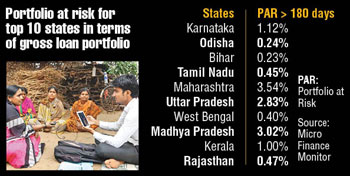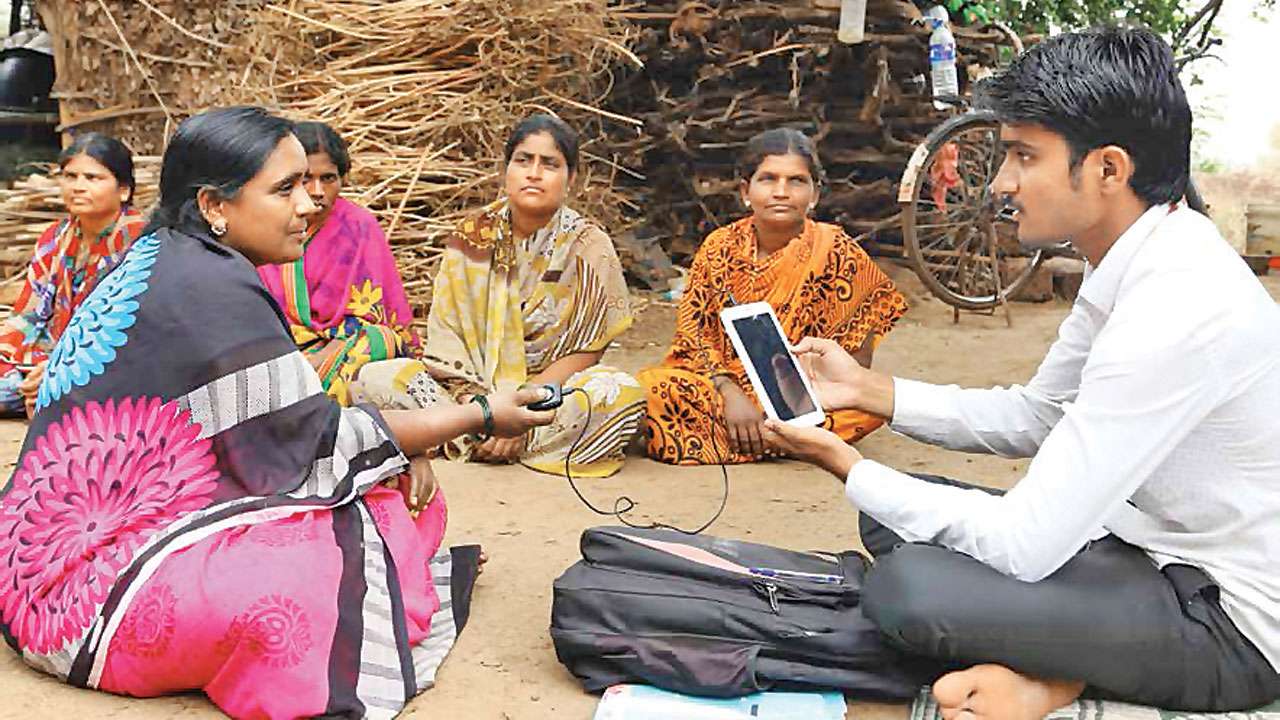Microfinance industry's loan portfolio has grown by a healthy 43% on-year during the December quarter touching Rs 1,66,284 crore at a time when the tight liquidity condition has hit the non-banking finance sector.
The number of microfinance accounts has grown 24% to 8.91 crore across the country. Maharashtra remains a troubled spot with the highest percentage of a portfolio at risk, data released by industry body Microfinance Institutions Network shows.
The performance of the microfinance sector, which plays a critical role in boosting grass root entrepreneurship in the country, shows the easing of liquidity crunch that had mildly impacted the industry. The adoption of digital transactions in the sector, which was earlier cash driven, also had a positive impact on the industry.
"Microfinance institutions, especially NBFC-MFIs, that hold the largest share in the micro-credit space, have shed off the impact of last year's liquidity crunch and are focusing on steady growth in the loan portfolio as well as the number of clients in the coming quarters. Further, among the MFIN members, we have observed that 81% of disbursements to the clients are being done through cashless mode. In fact, some of the member NBFC-MFIs have even reported 100% cashless disbursements. This underlines the role of microfinance institutions in furthering the digital payments agenda of the government in the low-income segment," Harsh Shrivastava, CEO, MFIN, said.
 The growth, however, has tapered down a bit from the heady 50% level that was witnessed in the first half of the year.
The growth, however, has tapered down a bit from the heady 50% level that was witnessed in the first half of the year.
During the March-September period, the microfinance industry witnessed a growth of 51% on-year with total gross loan portfolio touching Rs 1,46,741 crore by the end of the second quarter.
From a high of 72% achieved in FY16, the growth of small lenders fell to 29% in FY17, post the impact of demonetisation when cash loans got halted.
Following that, micro-finance lenders disbursed loans electronically, which has touched 81% of the aggregate disbursal during the third quarter.
"In Q3, more than Rs 14,807 crore was disbursed digitally, which translates into cash-less disbursements in over 56 lakh loan accounts. Overall trends have remained similar from the last quarter. Of the 45 NBFC-MFIs members, 33 have reported over 90% cash-less disbursements. It is noteworthy that 25 NBFC-MFIs have also reported 100% cash-less disbursements," the report added.
There has been some mild improvement in asset quality during the December quarter against the September quarter.
Portfolio At Risk (PAR) beyond 90 days outstanding has gone down from a level of 0.29% as on September end to 0.19% in December. The corresponding figures beyond 60 days and beyond 30 days outstanding have also similarly improved over the quarter.
Among the states, Maharashtra continues to perform poorly relatively with PAR for beyond 180 days outstanding at 3.54%, highest among all other states.
